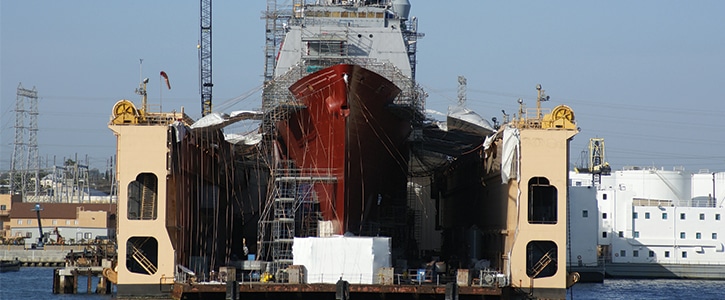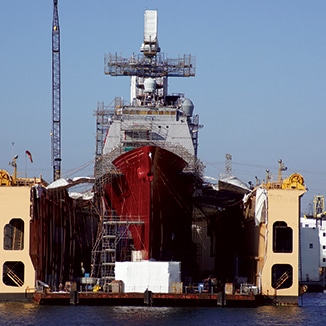
Despite a campaign pledge of 350 a ship fleet, a recent article on Breaking Defense points to the reality of the recently released budget by the Trump administration, which cuts the Shipbuilding & Conversion, Navy (SCN) account by more than a billion dollars, from $21.2 billion in 2017 to $19.9 billion requested for 2018. Aircraft procurement also is cut by more than $1.5 billion, from $16.8 billion in 2017 to $15.2 billion requested for 2018.
While this is a disappointment for Navy advocates and defense manufacturers, it reflects, according to the column, Defense Secretary Mattis’ decision to prioritize readiness over modernization. Consequently, it indicates a growing focus on maintenance, repair, and overhaul (MRO).
MRO Software Moves to the Forefront
According to reports from Technavio and Orbis Research, the global naval vessel MRO market is expected to grow at a compound annual growth rate in excess of 9 percent through 2021. Technavio notes, “The extension of the service life of deployed naval vessels is one of the primary drivers for market growth. The provision of sufficient funds for extending the service life of deployed naval assets has become a significant factor among global military agencies. Periodic upgrading of naval holdings considerably helps in lowering the costs linked with the procurement of new assets.” This outlook is reflected in the proposed Trump budget, where ship depot maintenance is funded at 100 percent of projected need, a $1 billion increase over 2017.
For those providing MRO services, the competition will be severe. According to the Technavio report:
“The naval vessels MRO market is largely competitive and the vendor competition in the market is based on factors such as cost, quality, reliability, and aftermarket service. Due to the changing nature of the underwater warfare, vendors need to offer cost-effective and high-quality platforms for naval assets to sustain and succeed in this competitive environment.”
MRO Software Differentiates Competition
Due to the high complexity of these naval systems, and the critical necessity of maintenance and repair to the readiness strategy being deployed, leaders in the MRO space are turning to solutions that simplify and streamline MRO processes. They do this by providing real-time visibility of work in process to the shop floor, supported by real-time problem resolution systems that extend into supplier networks. Leveraging this kind of technology for MRO is expediting complex processes while driving down errors and reducing maintenance costs.
MRO operations are facing a rapidly changing, highly competitive environment. In the face of higher competitive pressures, MRO shops must look to modernizing practices and leveraging digital technologies to take operations to new levels of productivity. For more information on how to improve MRO Productivity download our latest whitepaper:






